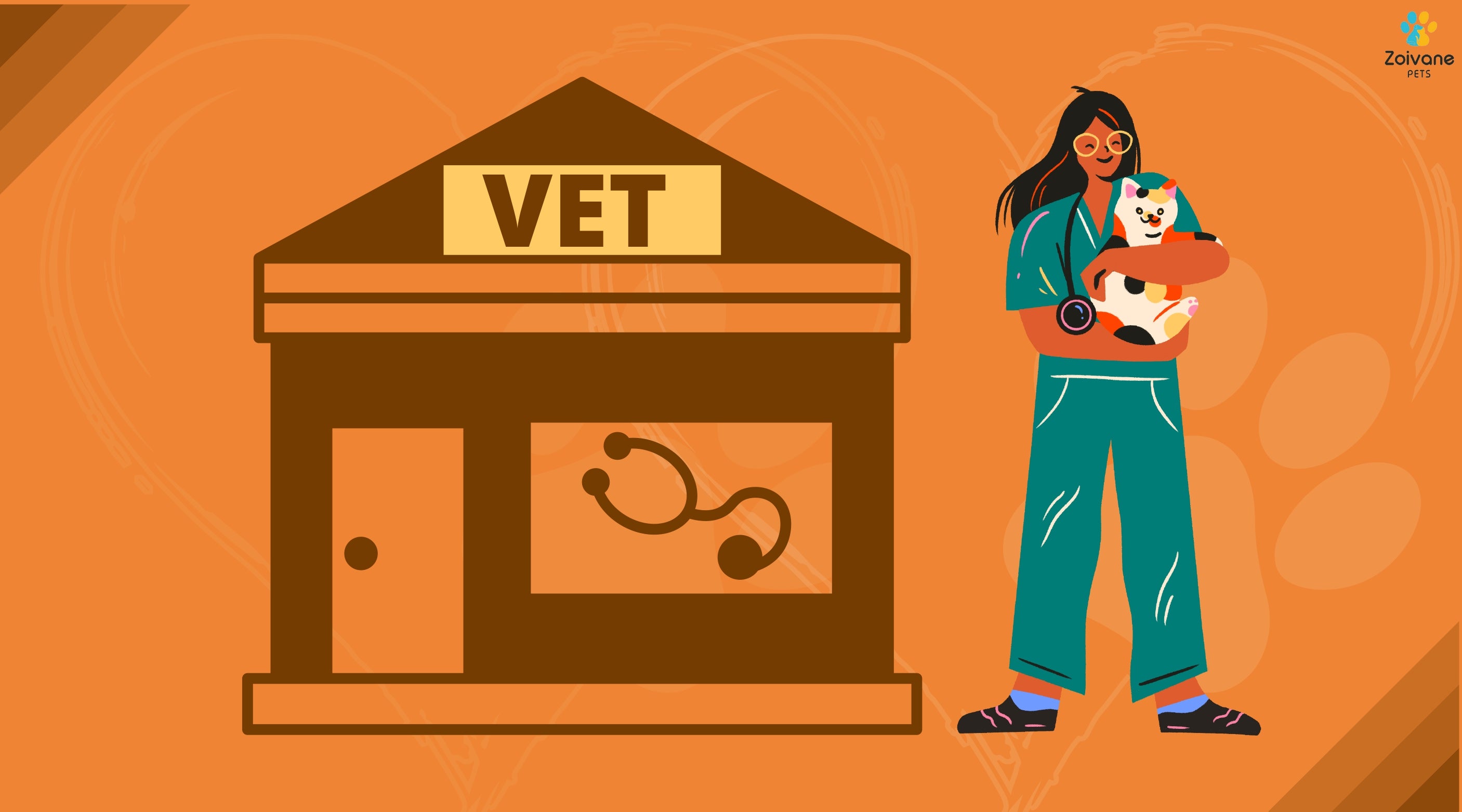
Male Dogs VS Female Dogs: which is better for you
Getting a dog is one momentous decision of your life that creates beautiful memories yet is filled with responsibility. The first question potential Pet parents ask themselves is whether to shop a purebred or adopt from the local shelter. (If you’re still unsure about this decision, read here). The second one they think about is whether to get a male or female companion.
Myths suggest that one gender is better than the other. But, is it really? Why is it that males are preferred more over females? Is there solid basis for peoples’ mindset or are their preconceived notions baseless?
This blog will bust all myths concerning choosing the “right” gender, delve in detail into the various Anatomical, Hormonal, Health & Hormonal differences between the two & cover variables like Loyalty, Training, Longevity, Neutering, Appearance etc.
The battle of the sexes is not limited to Homo Sapiens after all. Myths declare male dogs as “better in all regards” in comparison to females. They brand males as affectionate & easy to train, and females as aggressive, overprotective & “more problematic”. In reality, there is no study that has proved any general truism that a dog will behave a certain way because it is male or female.
Does Gender Matter?
Just like every human has a different footprint in all aspects, be it appearance, nature or temperament, so do dogs. For the most part, gender is not an accurate guide for a dog’s overall health & personality. In other words, it really does not matter if your purchased pup or adopted doggo is a boy or a girl. What is more important is having adequate knowledge about their care, the right kind of products and most importantly, the right kind of training.
However, the personality of your dog may depend on the influences he’s exposed to, his breed & his training, but his gender can dictate his ability to learn from it all.
“Broadly speaking, a dog’s sex has little bearing on his suitability as a pet. That shouldn’t be a major factor in the decision-making process. Meet the dog and see if their personality fits with yours. A good fit between dog and owner is more likely to be dependent on other factors. You need a dog whose energy level and demeanor fit with your lifestyle.” Says Dr. Gary Richter, Author of The Ultimate Pet Health Guide.
Dr Richter’s view is shared by Nicole Ellis, a Professional Dog Trainer, she says, “the most important influence on personality and compatibility with humans is not male or female but how a dog is trained and what it’s exposed to.”
Let’s take a look at 4 key differences between the two genders that you should be aware of before getting a pet home.
Anatomical Differences
The obvious differences between male & female dogs are their genitals & reproductive organs. Experts have noted that males, mostly, tend to be larger in height & weight; you may want to keep that in mind if the size of your dog is important to you. Secondly, a female dog does tend to reach maturity faster than the male dog. Its early maturity gives it an advantage when it comes to training. This doesn’t necessarily mean that the female dog is more intelligent than the male dog, it simply means that a female of the same age as the male will be slightly easier to train because it has matured faster.
Dr. Richter adds, “while a dog’s behavior can be influenced by hormones, if you remove their source by spaying or neutering the dog, you’ll see less of the behavior over time.”
Hormonal Differences
The primary Hormonal difference between male & female dogs is that females go into heat twice a year, during this phase their body & brain are wired to seek partners for reproduction. Males, on the other hand, mount people, other dogs, or inanimate objects. A neutered dog will be less likely to mark his territory, mount, hump, or roam.
Let’s address the elephant in the room first. Females experience ‘Estrus’ twice a year. This is also known as “going into heat”. This simply means that their bodies are ready to carry a litter and their vaginas secrete a discharge that attracts males. A spayed dog won’t experience a heat cycle and will not be interested in reproduction. If you don’t want your dog to get pregnant at that time then it’s best to keep her away from other dogs. Also, don’t forget to keep Dog diapers handy during these 2-3 weeks.
Neutering / Spaying is different in males and females. When males are neutered, they undergo an ‘Orchiectomy’; a medical procedure to remove the testes. When female dogs are spayed, they undergo an ‘Ovariohysterectomy’; a medical procedure to remove the ovaries, fallopian tubes, and uterus.
Health Differences
It’s important to be educated & firm about whether or not you will spay or neuter your dog before you choose between a female or a male. If you haven’t thought about it yet, continue reading to get a better understanding. While females are more prone to mammary cancer & uterine infections, males are more prone to testicular cancer & prostatic hyperplasia.
Spaying / Neutering reduces the risk of many such diseases and, in general, benefits of the procedure outweigh the risks. In the past, most vets recommended Spaying or Neutering early, before the dog reaches puberty to prevent development of unwanted behaviors. However, recent studies have interpreted the opposite, the procedure should be undertaken after your dog reaches puberty.
Dr. Richter adds, “The effect of waiting until maturity seems to vary from breed to breed, but in general, dogs spayed or neutered later in their development have fewer orthopedic issues and are less likely to develop certain types of cancer.”
Male dogs do not have “seasons”, and unless neutered, they can be sexually active all year long. Once an intact male dog reaches sexual maturity, he may begin to mark, mount and roam. Neutered male and female dogs may also exhibit these normal canine behaviors, but typically to a lesser degree.
Behavior Differences
Behavior & temperament are two aspects, interpreting & putting them in boxes is fairly difficult. Due to many variables attached to these two, such as upbringing, diet, training and overall environment they live in, Dr. Richter says that a lot of it is “Human Projection”. However, he adds, “A lot of it is Yin & Yang. Dogs seem to behave better when they live around other dogs of the opposite gender.” You may have come across the myth that female dogs are more loyal than male dogs. The fact is that both genders want to roam to find a suitable mate for procreation, females especially when they’re in heat.
Aggression & Trainability are two other aspects that have many myths attached to them. Research & experts have found no evidence of males being more trainable or females being more aggressive. Rest assured, getting to know your dog’s nature, temperament & training needs are more relevant aspects.
Now that we’ve touched base on 4 key difference points between male & female dogs, let’s debunk some more myths & take a look at some other burning questions pet parents have when they decide on the gender of their pet.
Learning Ability: There is no interpreted difference between male & female dogs of the same breed when it comes to learning ability.
Loyalty: Again, both genders can be termed as equally loyal, although sometimes for different reasons. As adults, female dogs care in almost a motherly way, while males tend to lean more towards pack preservation. Neither approach is incorrect nor less loyal.
Longevity: Depending on the breed, and assuming that both are from the same breed with no major illnesses, female dogs tend to outlive the males. Ironic as it seems, same is the case with humans.
Training: This aspect is absolutely personal & is unique to every dog & his trainer / master. A minor difference that researchers have noticed is that females seek to only please their masters, but the males seek to both please their masters and to find their own position within their pack.
Appearance: Firstly, male dogs are generally larger than their female counterparts. This difference in size is inconsequential, however, the difference in size is greater in some breeds. It will be less pronounced if the dog has been neutered at an early age. Secondly, males tend to look slightly more masculine & muscular than females of the same breed. Again, this minor difference in size, weight, height & appearance is, at the end of the day, a matter of personal choice.
Aggression: Both male & female dogs can be aggressive. There are subtle differences between the two genders. Male dogs are more likely to posture, threaten and challenge. However, this is often a show that doesn’t result in an attack. Fights between two male dogs are often ritualistic and cause little harm. In contrast, female dogs are less likely to exhibit threatening behavior and they have a stronger tendency to enforce their dominance. Fights between two female dogs are more likely to occur than fights between two male dogs. In addition, female dog fights are typically more damaging.
Pack Situation: Experts have observed that females are a lot more adjustable in packs. They’re much less likely to upset, disrupt or disagree with the pack & its power dynamics. Males, on occasion, are more likely to cause disruptions.
Friendliness: This is related more to a dog’s breed than to his gender. It’s important that you give a lot of thought on the kind of companion you want around your family. Regardless of gender, you may find yourself in a soup in case you take an uneducated decision. Selecting a responsible breeder / shelter is also key here. If you want a friendly dog, you need to approach a breeder / shelter who has taken good care of your dog.
“I personally prefer males. On the other hand, females are in majority more obedient, less stubborn and easier to handle. Males - or the ones I had so far - are more bossy, more impulsive and impossibly affectionate. Mine is my shadow ALL the time. And I mean all the time. Jack would be absolutely content with no sleep, no food, and me petting him for days at a time. It’s never enough affection from his point of view. The females are much more easy-going. It’s really a question of your preference.” – Aditya, dog dad to 2 canines.
To reiterate, experts and researchers have agreed that a dog’s gender is relatively unimportant when you’re choosing a new doggo. Instead, you should focus more on meeting your dog, learning as much as you can about his past, vaccinations, medical history & how they ‘ll fit with your lifestyle.
To conclude, it’s a choice. Feel the connection rather than force it. Regardless of whether you feel drawn to a female or a male dog, there’s nothing wrong with your decision.
















تعليق واحد
I’m 75 years old and my first dog was a male collie. At that time, I was 10 years old. Since 10, I have had many pups including male and female. My overall opinion is that a female pup has a more loving personality and trains easier. Males are good dogs too, but they definitely have a more male type personality like human males over all. It’s kind of like, females are gentle, but protective. Whereas male dogs seem to me like they are very loyal, but seem to be a little more independent 🤔. Please remember this is just my opinion, and I have had many pups. No matter what gender pup you get, what you give to them of yourself is what you’re going to get back. Be patient and kind! Your dog will become your best friend no matter what move you are in, or what life has dealt you. Try to remember that! Your best friend don’t understand what you’re going through, but they will know something is wrong, and will love you know matter what it is! So love them, and treat them with respect for a great lifelong relationship. Their life is way too short, so don’t waste one minute of time with your best friend.
Larry marchman
اترك تعليقًا
This site is protected by hCaptcha and the hCaptcha Privacy Policy and Terms of Service apply.